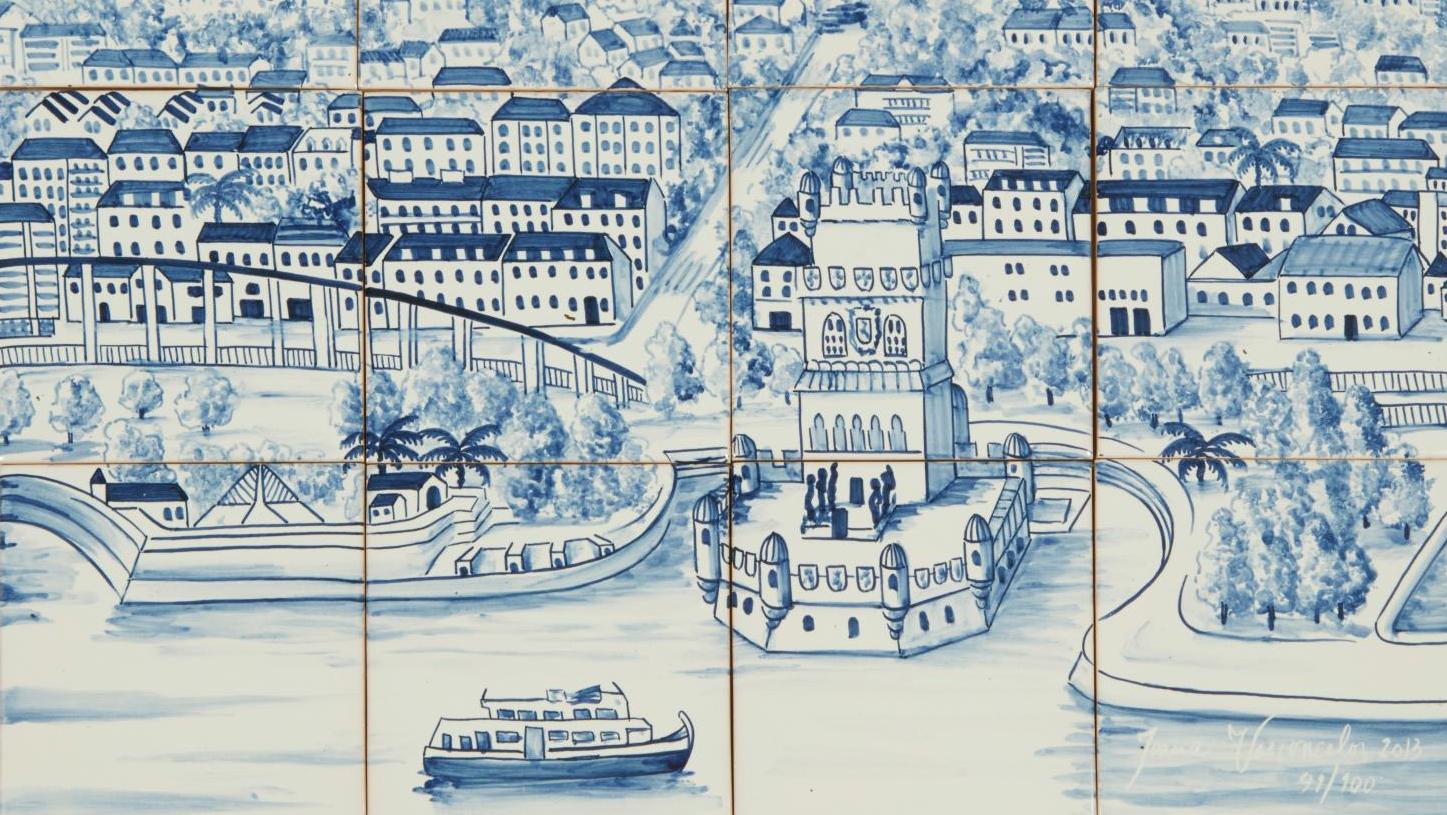Unlike what might be commonly thought, azulejos take their name not from their traditional blue color but from the Arabic al zulaydj, meaning a small enameled polished stone intended to copy ancient mosaics. Portugal gave them a unique artistic and monumental grandeur.
Joana Vasconcelos (born 1971), Trafaria Praia, large panorama of 21st-century Lisbon (Belém Tower), 2013. Hand-painted azulejos, signed, dated and numbered on tile 95/100. Fired by Dilecta, 42 x 56 cm/16.54 x 22.05 in (14 x 14 cm/5.51 x 5.51 each tile).
Paris, Drouot, June 22, 2015. Millon Auction House.
Result: €3,900
The Iberian peninsula’s earliest azulejos appeared in the architecture of al-Andalus: the alicatados (a mosaic formed of polygonal, colored glazed tiles) at the royal palace of Alcazar in Seville are none other than azulejos that were cut up and assembled into geometric forms. In Portugal, some rare examples of 15th-century Mudéjar art from Seville still grace the Palace of Sintra. King Manuel I (1469–1521) played a key role in this: following Seville’s example, he demanded azulejos for his palace, starting a tradition destined to thrive. first, however, this art form had to shed its burdensome constraints. alicatados were supplanted by the corda seca (“dry rope”) technique, where the design was drawn on fresh clay with a mixture…
com.dsi.gazette.Article : 26834
This article is for subscribers only
You still have 85% left to read.
